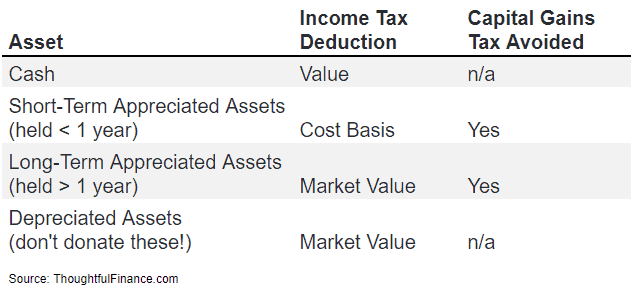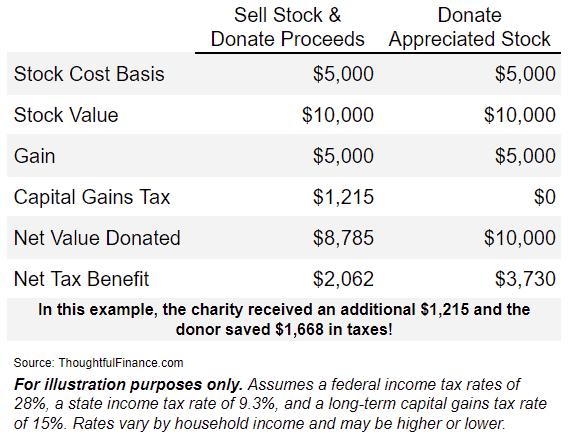Operation Christmas Child is a program that has millions of participants, nearly 500,000 dedicated volunteers*, and a sizable number of vociferous critics. It is a program that I hear about every single November from friends, colleagues & acquaintances, church contacts, and so on.
Many smart, well-intentioned people that I know choose to participate in Operation Christmas Child each year, mention it in conversation, or invite me to participate. Many other smart, well-intentioned people that I know have nothing good to say about Operation Christmas Child and criticize it each year. Hopefully this post can also be a resource for those caught between Operation Christmas Child’s promoters and it’s critics, both of whom appear to overstate their positions.
I’ll start with a disclaimer that most organizations and projects have some “hair” on them (including the ones that I support and donate to!) and I don’t want to discourage anyone from doing good. We each do our best to weigh the pros and cons and unknowns through the lens of our judgement, priorities, and values.
What is Operation Christmas Child?
Operation Christmas Child is an annual campaign that rallies millions of people to fill shoeboxes with gifts which are then distributed to kids around the world through a network of churches. It is sponsored and administered by a faith-based non-profit called Samaritan’s Purse.
Is Operation Christmas Child good (or helpful)?
I participated in Operation Christmas Child one year, but hesitated to volunteer again until I could find an answer to my question of whether Operation Christmas Child was even helpful.
One of my concerns was that Operation Christmas Child seemed like a misguided way to deliver aid. However, to Samaritan’s Purse’s credit, they do not claim to provide aid. Interestingly, Operation Christmas Child does not claim that the Christmas shoeboxes meet needs or are beneficial in any material way. Operation Christmas Child’s website is quite clear that the purpose is evangelism and that the Christmas shoeboxes are tools to that end.
So why do Operation Christmas Child’s promoters and participants communicate the idea that the boxes are providing for needs? I am not sure. I can only assume that they are reading too much into the oft-repeated Operation Christmas Child refrain that the Christmas shoeboxes will be delivered to “needy children.”
So the answer to whether Operation Christmas Child is good or not depends on whether the goal is to meet material needs or facilitate Christian evangelism.
Is Operation Christmas Child bad?
In addition to considering whether a program meets a donor’s objectives, donors should also consider what adverse consequences or externalities are produced. In other words, we should be mindful of the costs and consequences of our actions. The below are some questions I had when evaluating whether the program:
Is Operation Christmas Child an efficient and/or cost-effective way to distribute goods?
The cost of purchasing items in the US, collecting and processing them, and then shipping them overseas is much more expensive than simply buying and distributing goods locally. Imagine buying a pair of socks that was made in China, shipped to a US retailer, purchased at American prices, and then shipped back to India. It would be cheaper and more efficient to simply buy socks in bulk from an Indian company, which would be both lower cost and supportive of the local economy. I am not saying we need to boil everything down to dollars and cents and efficiencies, but stewardship of financial and environmental resources should be a consideration.
Do the contents of the shoe boxes meet actual needs?
Suggested shoebox items include: “a ‘wow’ item (such as a toy or clothes), personal care items, school supplies, clothing and accessories, crafts & accessories, toys, and personal notes.”
Operation Christmas Child critics point out that it is either naïve or arrogant to think we can give a gift to someone without knowing anything about them. Apologists contend that many of the suggested contents are basic necessities, such as toothbrushes or school supplies. I can see both sides, but ask myself:
Are the items actually needed?
For instance, Operation Christmas Child suggests socks as a possible gift. I’ve been to a ton of places where kids do not typically wear socks. This is not to mention other Operation Christmas Child-suggested items such as scarves, mittens, things that require batteries, or articles of clothing. It is difficult to understand wants/needs with no context and Operation Christmas Child does not let donors know their box’s destination ahead of time.
Are the items meeting a need?
What I mean by this is that toothbrushes might be a necessity, but are also not difficult or cost-prohibitive to procure (especially relative to effort and cost of buying one in the US and shipping it to Africa). So toothbrushes are needed by the recipients, but sending a toothbrush might not be meeting a need.
Does helping hurt in the case of Operation Christmas Child?
In other words, does the importing of free goods undercut local businesses and economies? Donors do not know where their boxes will end up, so it is difficult to say whether boxes will negatively impact their respective destination. I’m sure some boxes have a neutral economic impact, while others will have a more negative economic impact. Personally, a range of outcomes that is neutral to negative sounds pretty bad to me.
The Operation Christmas Child apologists make a valid claim that we do not know the economic impact of each box and that the quantities may be too little to do much harm. Yet, Operation Christmas Child advertises that they will deliver 11 million shoeboxes in 2022*. In light of these figures, I believe it is hard to argue that the aggregate economic impact is unknown or marginal. The questions above are about whether the program provides benefits and/or whether those benefits can be achieved more efficiently. The final question is entirely different in that the answer may be that Operation Christmas Child has a negative impact. Other methods of relief/development has costs and negative externalities as well, so just pointing out that these factors should be taken into account and weighed against any potential benefits.
Why is Operation Christmas Child bad? A personal story…
Back in 2008, my wife and I volunteered at a couple of orphanages in Cambodia (today, I’d have reservations about doing something similar again). One day, a staff member led me to a closet to grab some office supplies. When he opened the closet doors, I saw both school supplies and shelves and shelves stacked with winter sweaters. The sweaters looked new and I could not imagine them ever being worn in tropical Phnom Penh (especially thick, holiday-themed ones). I asked the guy, “What the heck are all these sweaters?!”
Laughingly, he replied, “Americans keep sending us sweaters every year.”
I asked, “Why don’t you tell them to stop sending sweaters?”
“We don’t want to make them feel bad.”
It is very difficult to provide aid or give gifts when you know nothing about a person or their context. I am sure some boxes meet some needs, many boxes fulfill wants, and others bring joy. With 11M boxes delivered, I don’t think that is debatable. However, it seems that many more needs and wants could be met and more joy delivered if the program was run differently.
Operation Christmas Child’s promotional videos highlight success stories. This is what marketing, sales, and fundraising is all about. It is not deceptive in any way, but any action or program will result in a range of outcomes. Operation Christmas Child sends 12 million boxes, so there should be an ample number of success stories.
The question is not whether there are some successes, but what does the distribution of outcomes look like and what are the costs? What is the mean and median outcome? What do the tails look like? How does the skew look? And, of course, how does Operation Christmas Child’s distribution compare to those of its peers and other similar organizations?
Conclusions: It Depends
If your goal is to provide for needs and/or deliver aid/relief, then Operation Christmas Child is not the program for you. Firstly, because they do not aim or claim to do these this. Secondly, even if they did, it is not an efficient way to do it.
If your goal is to support the evangelism activities of Samaritan’s Purse, then Operation Christmas Child may be for you. The next question is whether participating in Operation Christmas Child or simply donating money is a better way to support Samaritan’s Purse.
Is Samaritan’s Purse a good charity?
As mentioned, I do not personally support Operation Christmas Child or Samaritan’s Purse for that matter. This post is focused on Operation Christmas Child, but I also have questions and concerns about Samaritan’s Purse. To be brief:
- If Samaritan’s Purse sponsors and runs Operation Christmas Child, what do their other projects and operations look like?
- Is Operation Christmas Child indicative of a larger problem of viewing evangelism through a Western-centric lens of consumerism and providing “stuff?” Conversations with other Christians in the non-profit sector lead me to believe the answer is yes. I’d dig deeper if I was interested in supporting Samaritan’s Purse, but am not.
- Samaritan’s Purse is led by Franklin Graham. I have a lot of respect for Franklin’s parents, the late Ruth Graham and the famous Billy Graham (who was a close friend of my grandparents). However, Franklin has a history of questionable financial moves and is overtly (and overly IMO) political.
- In 2009, Graham was publicly questioned about his combined salary of $1.2M and then immediately decreased his salary to nearly nothing. He has since raised it back up, albeit less publicly. There is nothing illegal about this, but why was he taking a salary so high that it was reduced when publicly disclosed? And why reduced to zero and raised back up? Why not simply adjusted to a reasonable level? And why all of this in the midst of revenue declines and layoffs at his organization?
- According to public filings, Graham’s 2019 compensation from Samaritan’s Purse was over $661k. Not a huge amount for the president of a large non-profit (especially for someone with a recognizable name that can bring in donor dollars), but quite high for: an organization of its size and especially for a Christian/religious organization. Of course, perhaps Samaritan’s Purse would not do as well with another leader. Again, nothing illegal here, but it raises eyebrows and elicits questions of board independence and stewardship.
- In addition to his Samaritan’s Purse salary, Graham receives an additional $250k for his work with the Billy Graham Evangelistic Association (BGEA).
- BGEA recently changed its IRS status from a “non-profit” to an “association of churches.” Samaritan’s Purse has also requested to be reclassified. Coincidentally, “association of churches” do not need to report financial or compensation data. Its a curious move to seek a change to your IRS status after compensation/stewardship controversies, especially after operating as a non-profit for decades.
- I can deal with someone being far-left or far-right, but Graham was proponent of the Obama “birther” conspiracy theory (among others) and has said ridiculous and hateful things about Muslims and immigrants. Hearing Christian leaders take political positions is bad enough, but some of his extra-political comments just make me sick.
- Perhaps Samaritan’s Purse is insulated from Graham’s personal views and financial issues, but he is the president of the organization. He has influence. I’m sure he has many positive qualities too, but there are enough questionable things that I don’t personally feel comfortable supporting Operation Christmas Child or Samaritan’s Purse.
My Personal Decision
All of the above is simply my personal view, based on speaking with Operation Christmas Child participants, browsing the Operation Christmas Child website, and speaking with other development professionals. Not deep due diligence, but enough for my personal decision on this. Of course, there’s multiple sides to every issue and I’m open to learning more, being proven wrong, or simply continuing the conversation as we all find our way. Merry Christmas!
Sources:
*https://www.samaritanspurse.org/operation-christmas-child/fact-sheet-occ/




